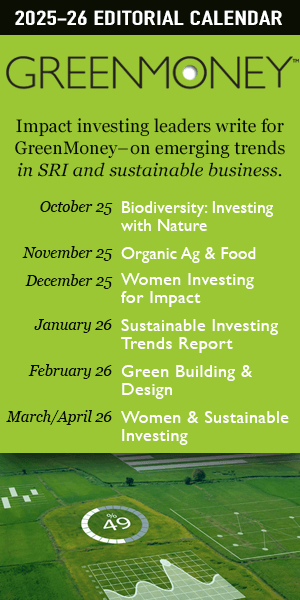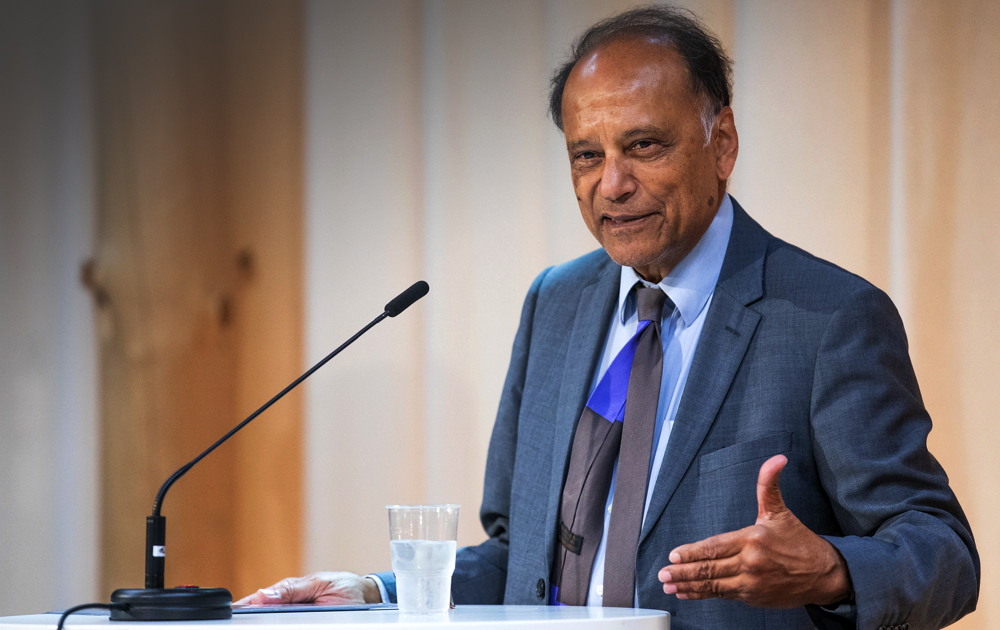Above photo credit: Annie Spratt
 It can be difficult to have hope for our world: 2023 marked the hottest year on record and saw dozens of countries in conflict. For many, the answer to these crises is faith. Faith brings the ability to see the truth of the moment, the courage to bear witness, the ability to envision a better future with the determination to act.
It can be difficult to have hope for our world: 2023 marked the hottest year on record and saw dozens of countries in conflict. For many, the answer to these crises is faith. Faith brings the ability to see the truth of the moment, the courage to bear witness, the ability to envision a better future with the determination to act.
Yet, what does faith have to do with capital? Given the way environmental and social uncertainties affect capital markets around the globe, quite a bit. For many, faith is required in these moments of challenge. We often think of faith institutions’ roles as leaders of moral realms, such as caring for others or honoring creation. What if we also considered the power of faith leadership paired with the capital these institutions hold?
$5 trillion US Dollars is owned by 360 religious organizations, according to a 2022 report from the Oxford Saïd Business School. Faith based investors often consider investing beyond our average lifespan, as they seek benefits for multiple generations and sometimes in perpetuity. For these investors with long-term horizons, how can their faith principles also live out through the power of their portfolios?
For the last four years, the Global Impact Investing Network (GIIN) has engaged with faith-based organizations to increase their capacity to pursue impact through their investment strategies and align their financial choices with their organizational mission. The GIIN is the global champion of impact investing, dedicated to increasing its scale and effectiveness around the world. Impact investments seek intentional, positive and measurable social or environmental impact alongside financial returns. They are designed to invest in the solutions people and planet need to thrive — such as financing affordable housing, community services, clean energy and environmental preservation — areas where many faith-based institutions have previous interest and experience.
Through our multi-year endeavor, the GIIN has seen faith-based institutions develop a range of responses to the current social and environmental challenges of our world. There is no guide or playbook, as every organization is unique, but there are exciting advancements to note for 2024.
Consider Impact as a Lens:
In December, the GIIN published a report that unpacked a new approach to portfolio construction, one in which impact is integrated holistically across all investments. This publication and its findings are an outcome of three years of roundtable discussions with 45 unique institutional asset owners across the globe. With this holistic construction approach, asset owners can then measure and manage impact outcomes in all investments, alongside their financial returns. While many may consider asset owners to only be public or private companies, there are many faith-based organizations that fit this description.
The brief offers an overview and a guide for institutions, which can be applied to religious organizations as well.
Institutional asset owners, including faith-based institutions, can consider how their investments affect the lives of their beneficiaries — be it their current employees, pensioners, or those in their congregations — while meeting their fiduciary obligations. For a practical application, the report highlights an example scenario of a teachers’ pension fund investing in affordable housing. A more inclusive understanding of a portfolio’s purpose can align with the long-term investment goals of many faith-based asset owners.
Graham Singh on turning surplus church properties into community hubs and affordable housing – Graham Singh of Trinity Centres Foundation joins David Bank of ImpactAlpha from the Global Impact Investing Network’s Impact Forum 2023 in Copenhage,n to discuss how Trinity is creating financing structures to underwrite the transition of surplus religious properties.
Review Your Real Assets
Faith organizations often own significant amounts of land and property. However, in many countries such as the United States and Canada, some religious denominations are experiencing a decline of faith membership and a declining use of faith-based property. In the United States alone, it is estimated that nearly 100,000 Christian churches will close by 20301.
A recent book on the topic of religious property asks: will these real assets of churches be gone forever or could they be “Gone for Good”, meaning intentionally transitioned to benefit local communities. When properties are no longer used by a federation or congregation, thoughtful engagement and planning can protect against crumbling, unused buildings or from a widening gap between the rich and poor due to gentrification. Given that in North America, many religious communities acquired property in ways that beg questions of equity and justice, reviewing real assets can encourage faith communities to reflect on their history and role in atrocities such as slavery.

Photo credit: Martin Solyst
Notre Dame University’s Church Properties Initiative and Fitzgerald Institute for Real Estate (FIRE) host conferences and have created a database of Catholic Church real assets. By collecting and tracking any change made to the church properties and their reimagined futures, the University has created a crucial feedback loop for Church leaders. Trinity Centres Foundation in Canada also offers opportunities to explore what transition of real assets could look like for faith communities. With the adaptive reuse of faith real assets, through offering low-rent space to local charities or affordable housing units, mission alignment can become a reality. Houses of worship do not need to close or crumble, rather they can be reused to benefit their community.
Continue Learning
There are many areas that connect faith alignment with financial choices, and continuing to learn about these opportunities is beneficial to faith-based investors.
One area that has seen expertise developed, especially by Jewish organizations such as the Jewish Community Foundation San Diego and the Jewish Community Federation and Foundation San Francisco is the advancement of donor-advised funds or DAFs. These accounts have allowed philanthropically minded organizations and individuals to combine charitable giving with impact investing and double the impact of their dollars. DAFs allow donors to select an investment account, where the capital will be used to support charitable organizations. Before the donor selects which charities to gift to, the donor can also select a mission-focused investment account that can be invested into impact investments.
For Muslim investors, the work of Project Tayyib is quite exciting. This initiative seeks to bridge Islamic values and finance through responsible investments. After years of research, this work outlines principles for Shariah-complaint asset managers and spans multiple asset classes, offering a first of its kind paradigm.
There are also additional educational opportunities for those who are interested in faith-consistent investing. FaithInvest and the Francesco Collaborative offer courses to explore the many opportunities that bespoke organizations seek to connect their mission with their money.
In closing, each faith-based organization will have personalized missions and investment goals so their approaches may differ. There are no silver bullets, but these ideas are a powerful starting point to inspire individual action and improve our world. While the world presents a host of challenges and opportunities to all investors, we recognize a unique power in faith investors: an ability to speak out against injustice, to envision a new world and to take action to lead us there. If the answer for many in time of uncertainty is faith, perhaps the answer to financing a just and sustainable future can be found in the same space.
Article by Kate Walsh, who serves as the Associate Director of Faith-Based Investors Initiatives for the GIIN. In this role, Kate networks with faith- based investors to encourage the use of impact investing as a tool to further their missions.
Previously, Kate served as the Associate Director of Investor Advocates for Social Justice (formerly the Tri-State Coalition for Responsible Investment) where she focused on advocacy regarding food sustainability, financial markets reform and forced labor concerns. In addition, she served as a board member for the Interfaith Center on Corporate Responsibility. She is also experienced in impact measurement having previously been the Manager of Program Evaluation for a 135-year old social services agency.
Foot Note:
[1] Elsdon, Mark. (2024) “Gone for Good?: Negotiating the Coming Wave of Church Property Transition”.


















